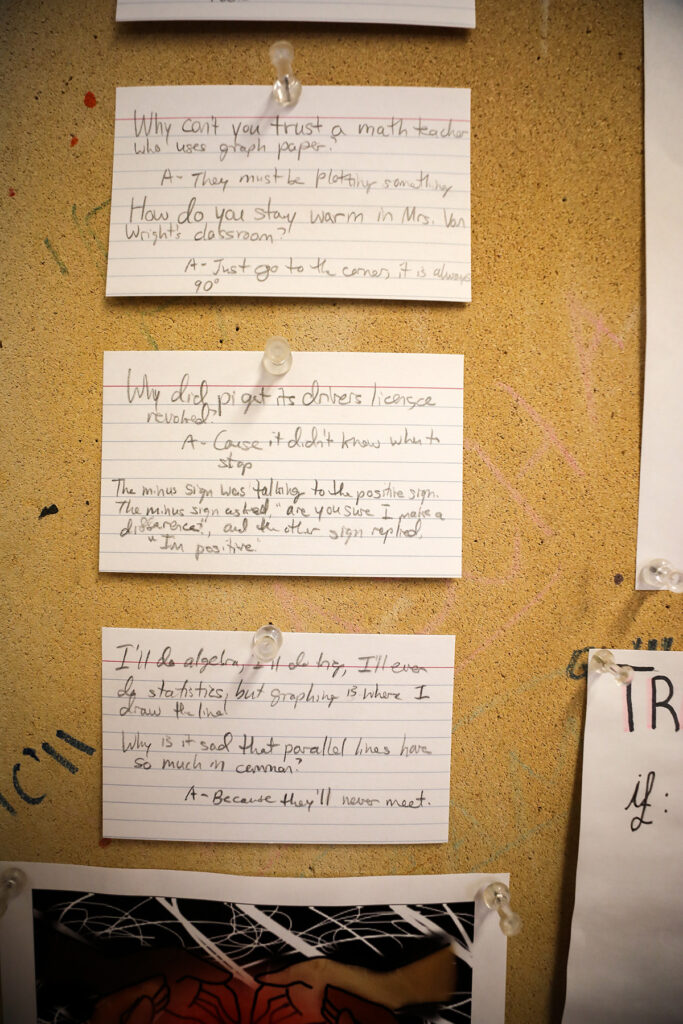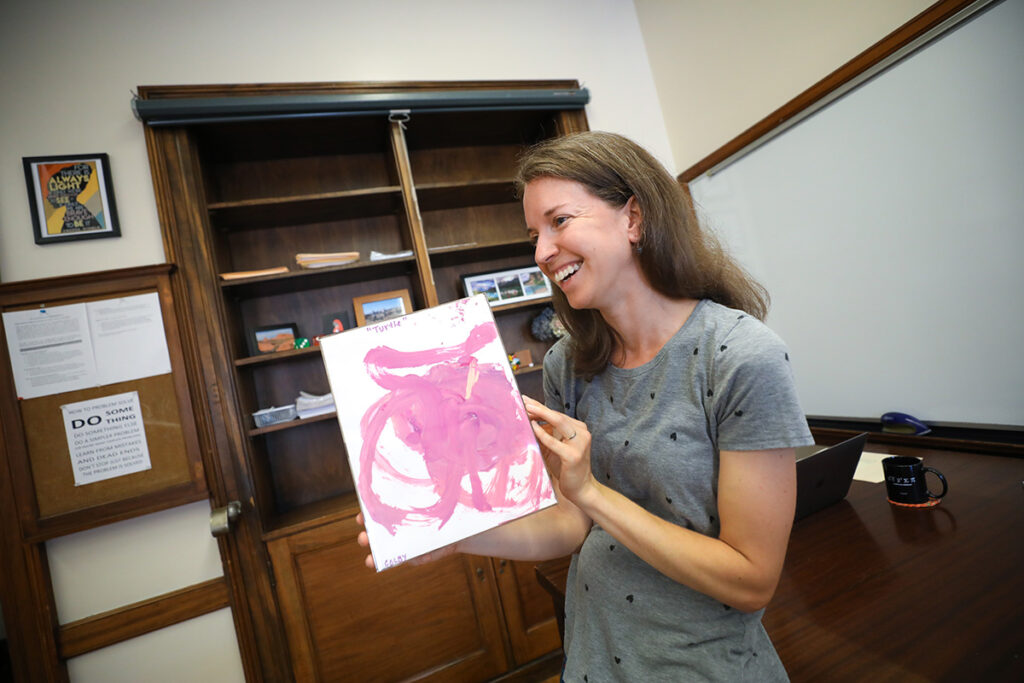Julie Van Wright

While Math Instructor Julie Van Wright teaches everything from Math 130 to Math 430, her favorite area of study is calculus. Why? “Because it brings everything together,” she says. “The geometry, the algebra, the trig, and everything students have learned up to that point — it all spirals in.”
Creatively carrying knowledge forward to solve problems is the backbone of Exeter’s math curriculum and the reason Van Wright loves teaching here. “This is the third independent school that I’ve taught at, and this is the most fun I have had in the math classroom,” she says. “The kids challenge me more than they realize and in a really good way. It’s awesome to see the ideas that they come in with, the different approaches they take and the ways that they build on concepts in ways I’ve never even thought of before. I feel like I’m constantly learning new stuff.”
A math major at Williams College with a master’s degree from the University of Colorado, Van Wright spent four years as an information technology consultant before turning to teaching full time. Inspired partly by her mom, who taught teachers how to teach people with disabilities, she says that “being a teacher was my dream growing up.”
We asked the instructor and diving coach for a tour as she excitedly readied Academy Building room 105 for in-person learning and the opening of school.

Representing women
“This summer in the Math Department we were looking at ways to incorporate more underrepresented mathematicians into our math problems,” Van Wright says. “My hope as a teacher, and especially in creating a classroom environment, is to have the kids feel safe and welcome and like they belong and that they can do well here. So, I specifically chose posters of women because I think they are often underrepresented and often unsung.”

Playing the angles
“Geometry props like these angle legs allow students to be creative in their thinking,” Van Wright says. “If we have a little bit of free time at the end of class, I like to give the kids a challenge, like, say, make the longest structurally sound structure you can in five minutes with this collection of angle legs, and just see what they come up with.”

Laughter is the best medicine
“In the spring, I had rotating student facilitators who led an activity during the first five minutes of class, just to set the tone,” Van Wright says. “These note cards are from Michael Yang ’24; he did jokes. One of them was, ‘I’ll do algebra, I’ll do trig, I’ll even do statistics, but graphing is where I draw the line!’ It was a great way to get the kids laughing, having fun together, and starting to feel more comfortable in the classroom.”

Seeing is not necessarily believing
“My 2-year-old son drew this, and he decided it was a turtle,” Van Wright says. “In math, we do a lot of diagram drawing, and I always tell my students, ‘Don’t assume anything.’ If it looks like a right angle, you can’t assume it is unless someone tells you it is. Or, the flip side, I might do a really bad drawing, but if I tell you all the sides are congruent, they’re congruent. So, if my son says this is a turtle, it’s a turtle.”